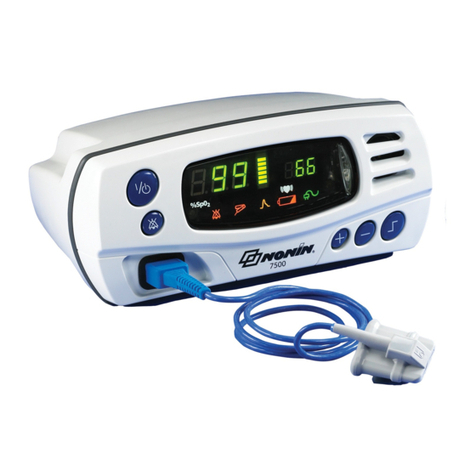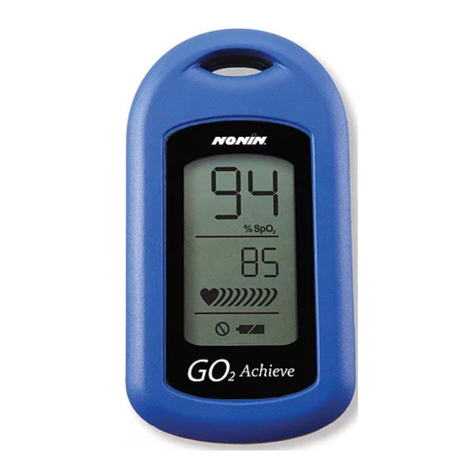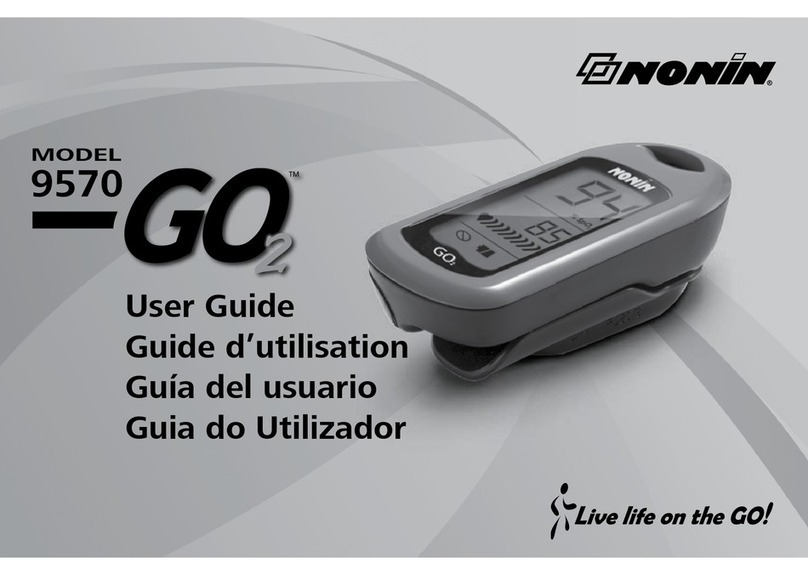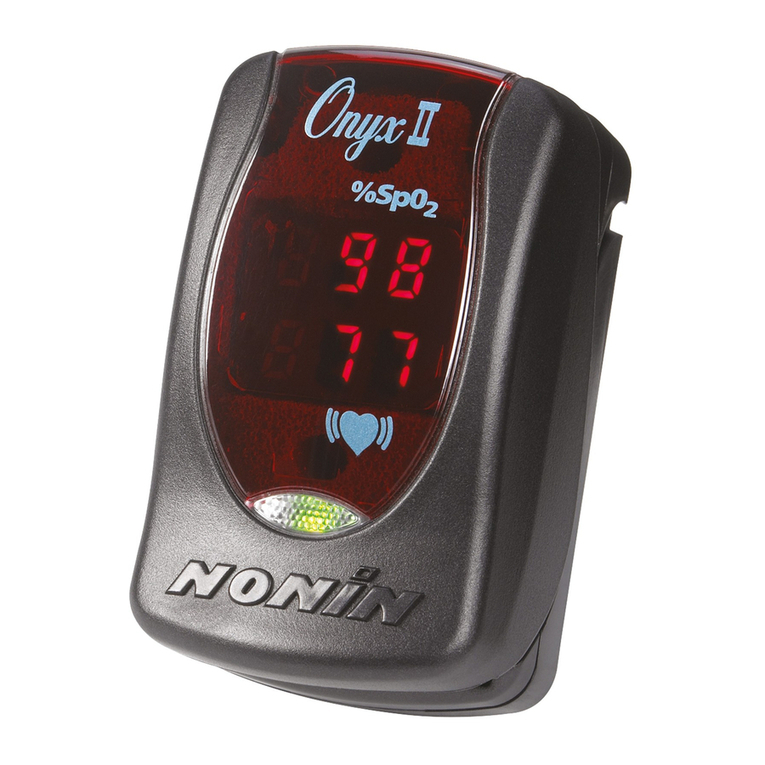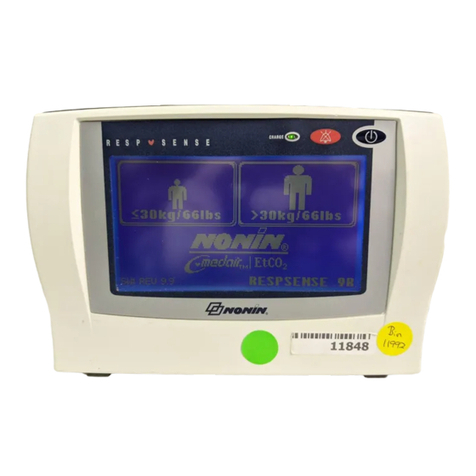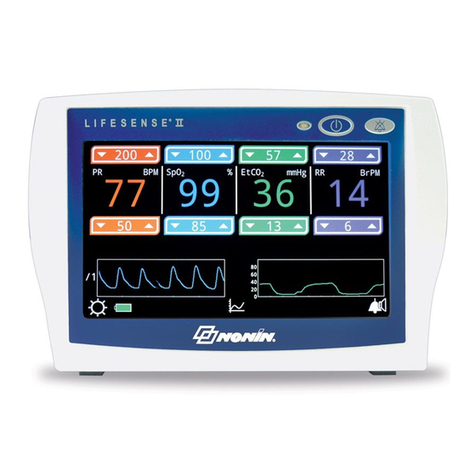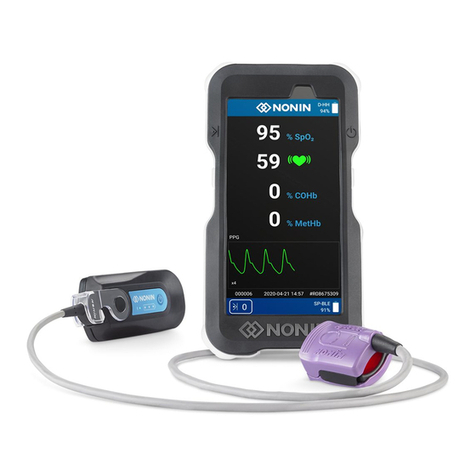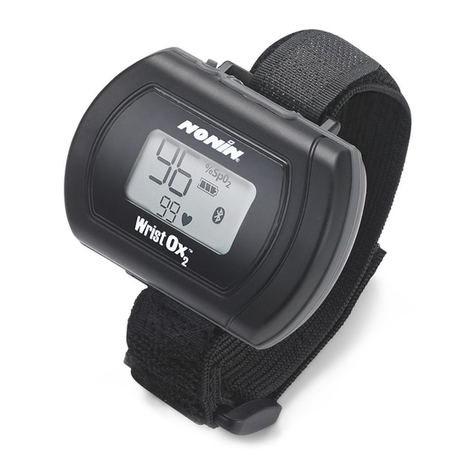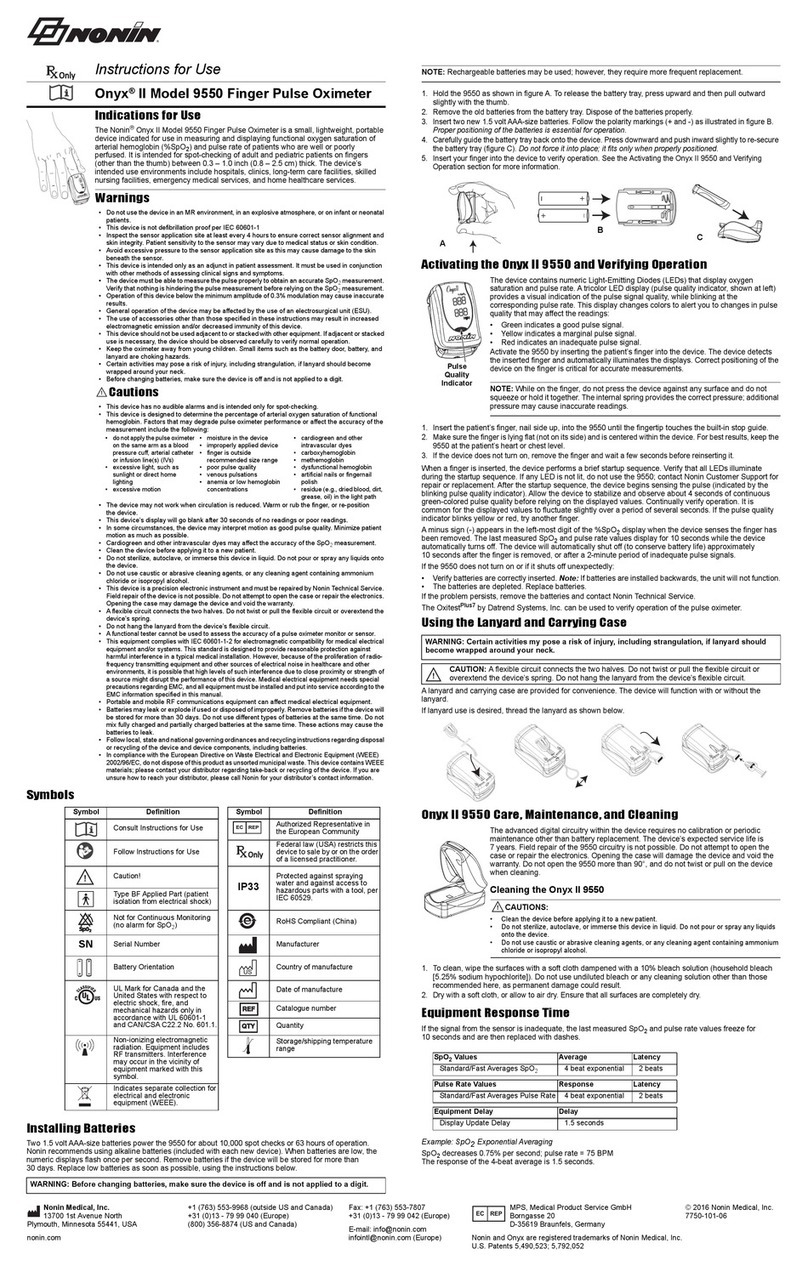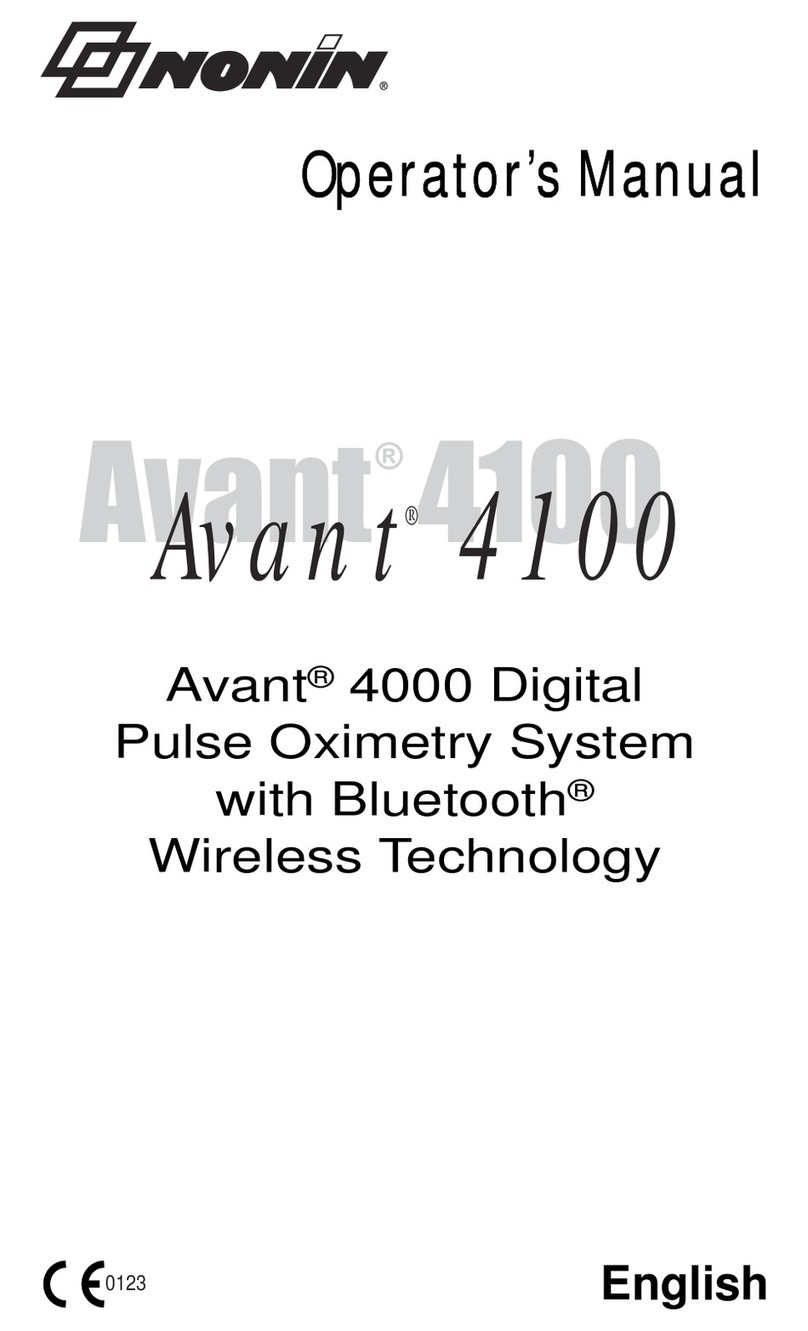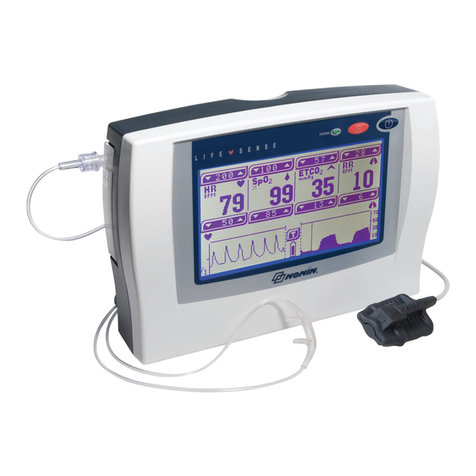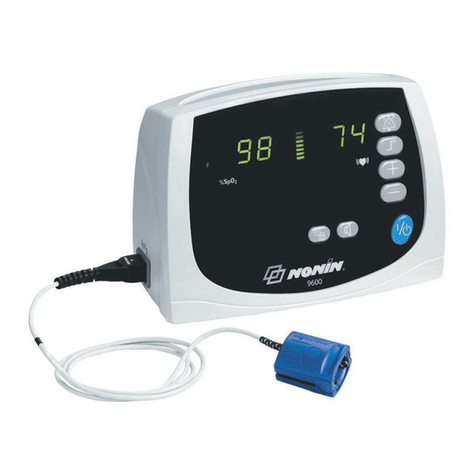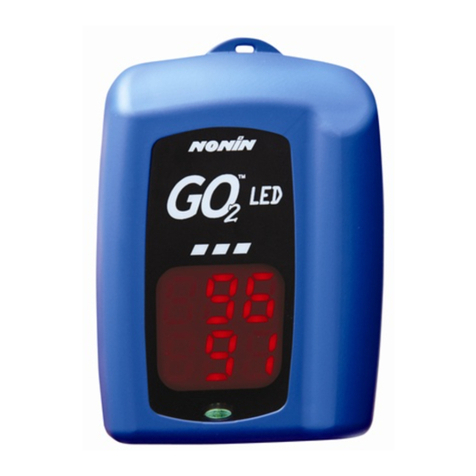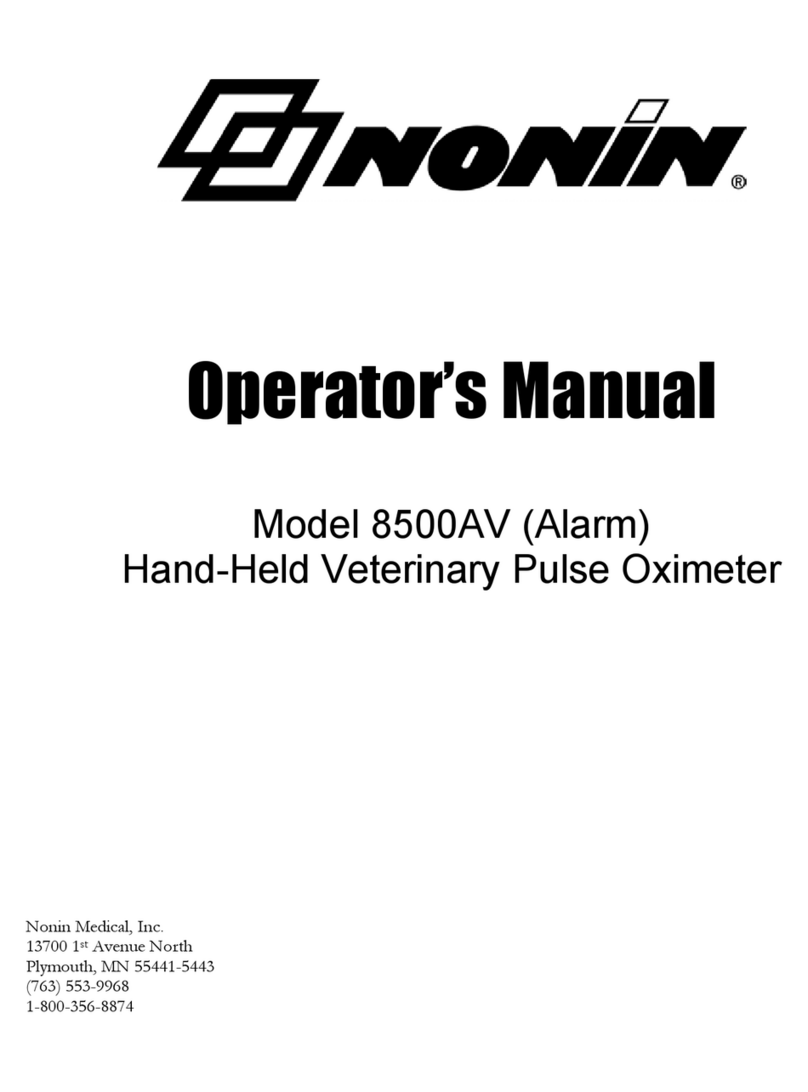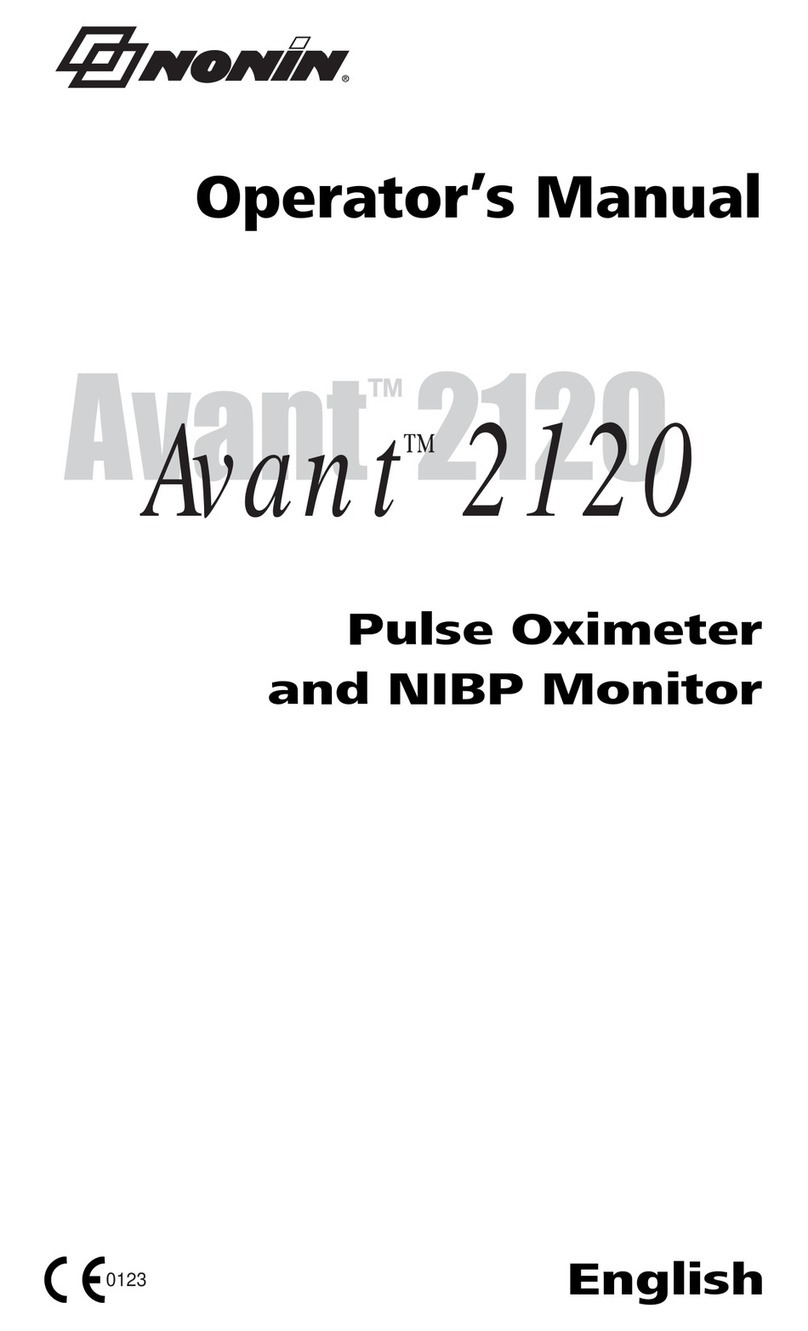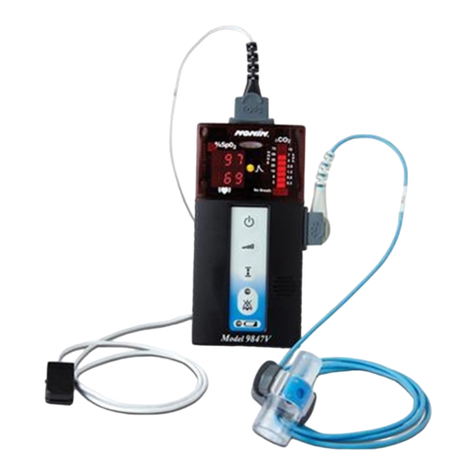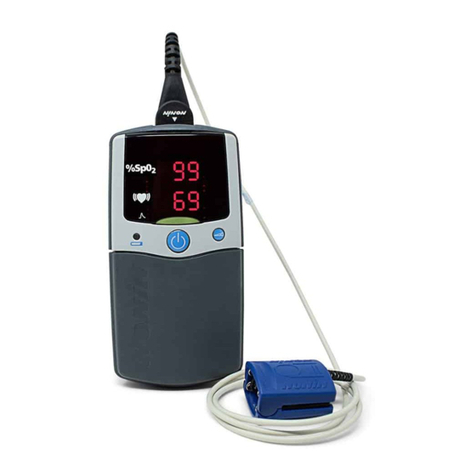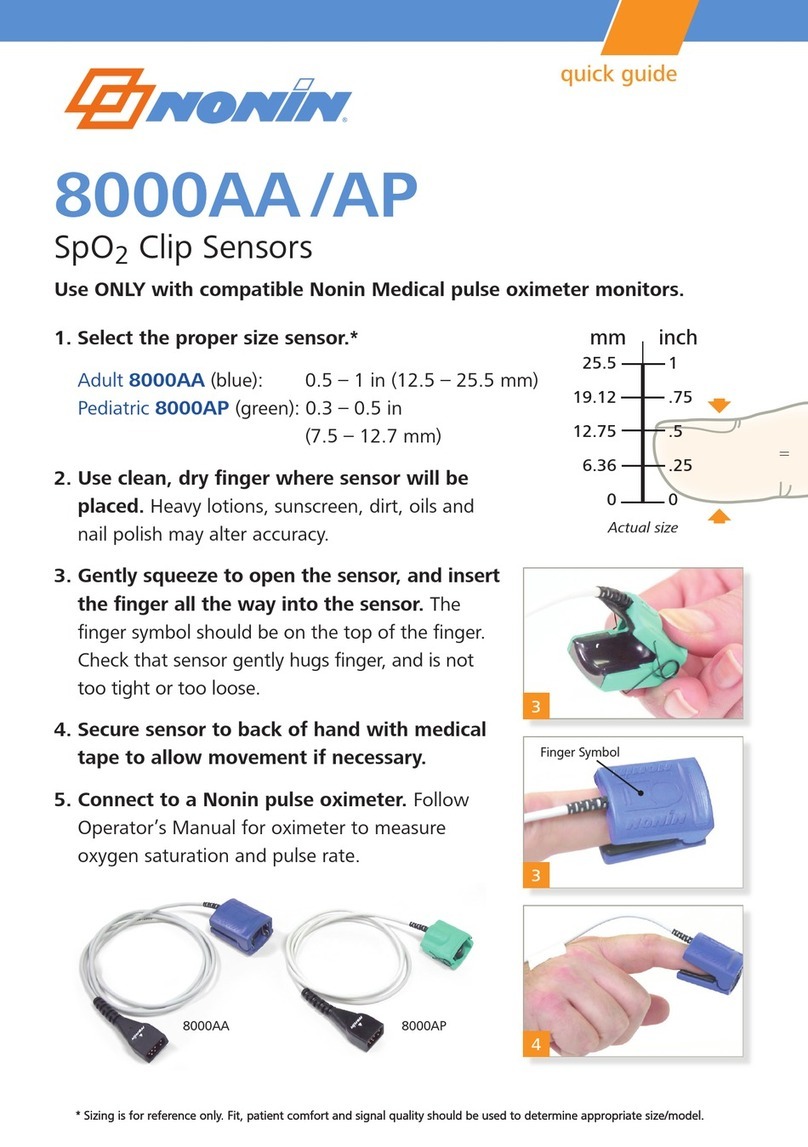
2
Indications for Use
Cautions
Before use, carefully read the Instructions for Use provided with the sensors.
When mounting the monitor to a mobile pole, mounting the monitor higher than 1.5 meters (5 feet) or mounting more than
2 kilograms (4.5 pounds) of equipment onto the pole may result in tipping, damage to the equipment, or injury.
This device is not an apnea monitor.
Verify that all visible indicators illuminate during the startup (initialization) sequence. If any indicator is not lit, do not use
the device. Contact Nonin Technical Service for assistance.
The presence of a defibrillator may interfere with the performance of this device.
This device may not work on all patients. If you are unable to achieve stable readings, discontinue use.
This device has motion tolerant software that minimizes the likelihood of motion artifact being misinterpreted as good
pulse quality. In some circumstances, however, the device may still interpret motion as good pulse quality. Minimize patient
motion as much as possible.
Ear Clip and Reflectance sensors are not recommended for pediatric or neonatal use. The accuracy of these sensors has
not been established for pediatric or neonatal use.
Do not autoclave or immerse the device or sensors in liquid. Do not expose the device or components to excessive
moisture or liquids.
Do not use caustic or abrasive cleaning agents on the device or the sensors.
The oximeter sensor might not work on cold extremities due to reduced circulation. Warm or rub the finger to increase
circulation, or reposition the sensor.
Always replace the batteries with fully charged batteries. Do not use fully charged and partially charged batteries at the
same time as this may cause the batteries to leak.
Use only Nonin-specified battery types with this device.
Do not remove any covers other than the battery cover when replacing batteries. There are no user-serviceable parts
inside other than the replaceable batteries.
Follow local, state and national governing ordinances and recycling instructions regarding disposal or recycling of the
device and device components, including batteries.
Batteries may leak or explode if used or disposed of improperly.
Remove the batteries if the device will be stored for more than 1 month.
This equipment complies with IEC 60601-1-2 for electromagnetic compatibility for medical electrical equipment and/or
systems. This standard is designed to provide reasonable protection against harmful interference in a typical medical
installation. However, because of the proliferation of radio-frequency transmitting equipment and other sources of
electrical noise in healthcare and other environments, it is possible that high levels of such interference due to close
proximity or strength of a source might disrupt the performance of this device. Medical electrical equipment needs special
precautions regarding EMC, and all equipment must be installed and put into service according to the EMC information
specified.
In compliance with the European Directive on Waste Electrical and Electronic Equipment (WEEE) 2002/96/EC, do not
dispose of this product as unsorted municipal waste. This device contains WEEE materials; please contact your distributor
regarding take-back or recycling of the device. If you are unsure how to reach your distributor, please call Nonin for your
distributor’s contact information.



















